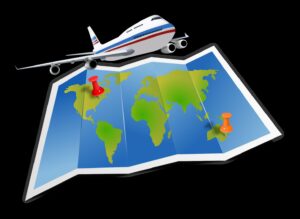Becoming a Digital Nomad: The Basics
4 min readDigital nomadism is one of the standout developments of my generation.
It might also be remembered as one of the fastest-growing career trends post-COVID.
But what are digital nomads? That’s easy. They’re professionals who work entirely remotely—usually on a laptop or via other types of portable technology.
And where do they roam? Wherever their hearts desire—and wherever their passports allow them to go. Around the world, dozens of countries are launching digital nomad visas.
Europe, in particular, has dozens of offers for American workers.
Sounds pretty straightforward, right?
In reality, digital nomadism involves quite a few lifestyle decisions—ones that might not be as romantic after you’ve spent a month or two on the road. If you really want to start exploring the pros, cons, and other topics related to becoming a digital nomad, then start here.
I’ve rounded up five of the most pressing questions for potential nomads. These should give you a good idea of what types of challenges and rewards this lifestyle brings.
How do they find new work? Are their clients only from their base country?
Most digital nomads are freelancers.
That means that they’re responsible for finding new work constantly. There isn’t a distinction here between digital nomads and freelancers—both rely on the same platforms and tricks to land new clients.
That being said, not all are freelancers.
An increasing number of digital nomads are employed full-time as remote workers. However, this tends to require digital nomads to respect the normal working hours of their primary office—which might mean waking up for midnight calls or even working through the night.
How do they pay taxes and use banks?
The digital nomad visas mentioned above are an important part of digital nomad culture.
When professionals live and work in a country, they’re responsible for paying taxes there. (Who would have thought?!) Digital nomad visas are designed to make it easier for the host country to regulate and tax remote workers.
That being said, most digital nomads work with a bookkeeper or tax agency in the US that has experience with professionals who work in other countries.
I highly recommend Brass Taxes—they’ve helped me navigate paying taxes in Spain as an American citizen. (I’m not a digital nomad, but my situation overlaps in many ways with their lifestyle.)
That being said, it can be pricey to pay for consultations on when and how to pay taxes. It can also be complicated when you live in a country where you don’t speak the language. (Plus, there’s the perennial joy of bureaucracy.)
The plus side? Banking, by contrast, is usually much easier.
Most digital nomads bank with larger brands like Bank of America and US Bank. These banks have a global reach and many international partners, making it relatively easy for you to use mobile banking apps and take out money. (Depositing is nearly impossible… but given digital nomads don’t usually handle cash, that’s not usually a problem.)
Is it hard to adapt to new places?
Most digital nomads follow a trail to a new place.
In other words, they aren’t just randomly picking out a spot on the map and saying there! The digital nomads who I know tend to make friends and meet up with them later on.
(Or lovers. Seriously—I have a few digital nomad friends who are like modern sailors. A lover in every port.)
When digital nomads don’t know anyone, they’re likely to use a service like Meetup, Hinge, or even find a ‘landing pad’.
A landing pad is like a coworking space blended with the features of a hostel. They’re specifically designed for digital nomads and professional travelers. Not only can you meet other digital nomads, but you can also network with fellow freelancers.
That brings me to my next point. These professionals tend to be extroverted and interested in getting out there. It takes time and effort to get accustomed to a new place—and it takes even more energy to truly immerse yourself in local culture.
While many digital nomads stay inside their ‘bubble’ of English-speaking freelancers, that’s not the end-all of this lifestyle.
Where do they live and how do they find housing?
As mentioned in the previous section, co-living landing pads are taking off across Europe.
My partner stayed in one here in Barcelona while we were apartment hunting (literally called the Landing Pad). As a remote worker, he knew it would have solid Wi-Fi—which is important for trans-Atlantic video calls.
Aside from co-living spaces, digital nomads might also leverage the friends they make. They tend to ask around to see if anyone is renting out a room in their apartment. If not, rental platforms are usually a solid go-to.
However, all the digital nomads that I know wait to receive an invitation or to find a good setup before they move cities.
Additionally, there’s a growing number of resources that take into account digital nomad lifestyles.
For example, Nomad List (from the mind that brought you LuggageLosers) constantly updates its cities and countries based on live data. That live data takes into consideration things like average Wi-Fi power, climate, healthcare, happiness, and more.
How much do they usually make?
There’s no straightforward answer.
However, the minimum that a wandering worker could make and still move around comfortably is estimated to be around $50,000. That being said, digital nomadism is a lifestyle choice.
You could make less money and make it work, especially if you’re planning to stay in the US or head to a very cheap host country. Or you could make upwards of $250,000, bouncing around as you please and renting castles along the way.



